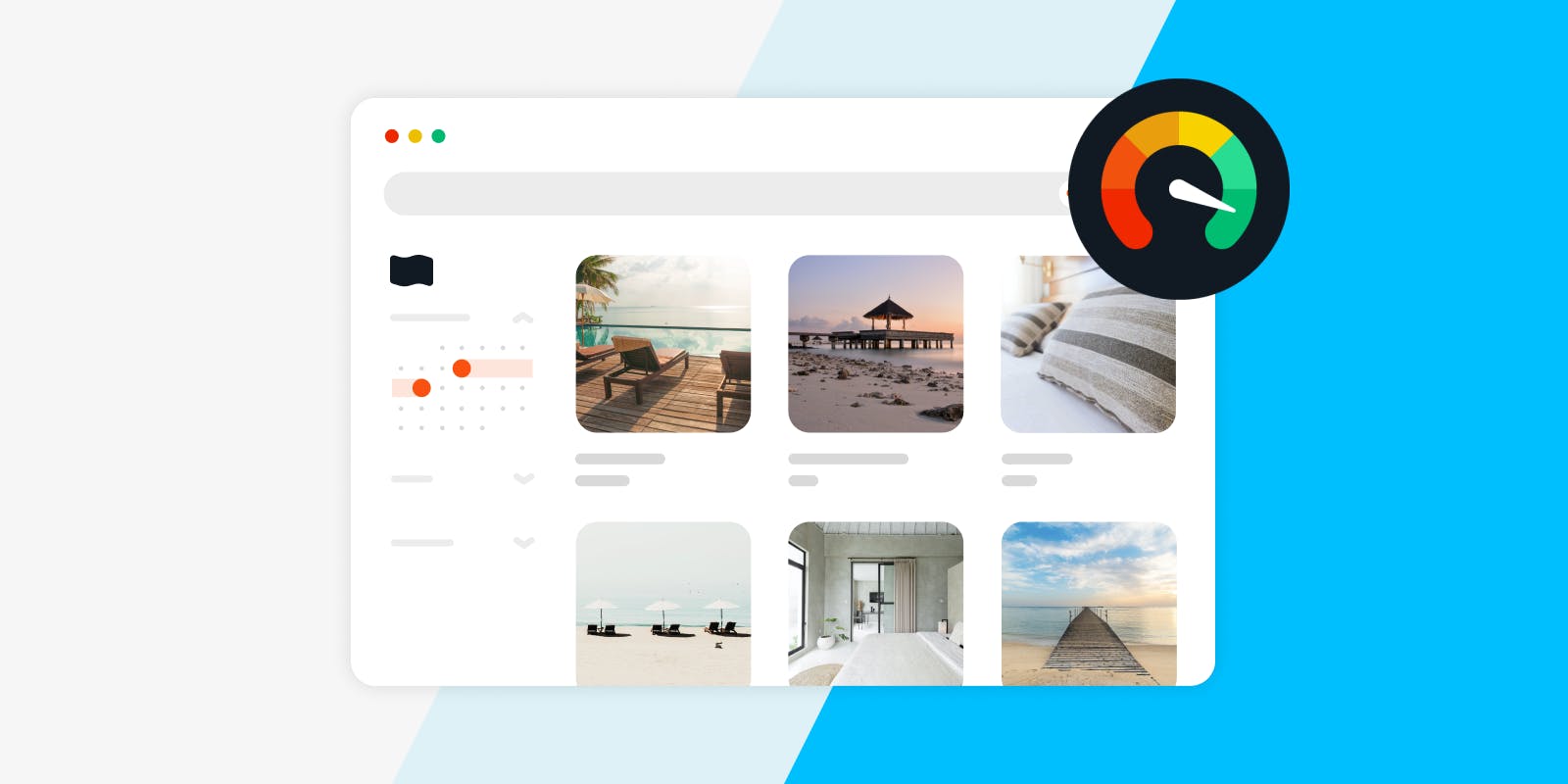
As travel restrictions continue to ease around the globe, travelers plan to return with a vengeance. In the first half of 2022, European airports saw a nearly 250% increase in passenger volumes.
But the state of the travel industry is a lot more complex. Today’s economic and environmental challenges are causing travelers to be choosier about how they book their travel. There’s also an increase in competitive pressures. With the proliferation of social media and travel search engines, travel sites face a double-edged sword: on the one hand, it’s easier to promote your listings; on the other hand, it’s harder to stand out. For travel search engines, the pressure intensifies as open, free-flowing information empowers travelers and proprietors, giving them more options. To make sure your businses stands out in an increasingly crowded market, it’s crucial that your website and app are fast, visually appealing, and user-friendly.
And speaking of building an online presence in an ever-growing space, web performance directly affects SEO. Google's Core Web Vitals, which measures websites' loading speed, interactive speed, and visual stability, all impact your Google search ranking. With images accounting for 75% of the page weight on today’s websites, they have an outsized impact on your website’s speed and performance.
But here’s the good news for travel websites - you can take concrete steps to have an impact. Here are 10 tips for improving your website and your bottom line:
1. Make your images high-quality without sacrificing loading speed
High-quality visual media is crucial to the core of travel websites. Travelers want to see the destinations before committing to the trip. But as many websites have found, it’s hard to balance image quality and page speed. To have the highest image resolution typically means larger image files and sacrificing your load speed. The longer your customers wait until the page and images load, the likelier they will leave before booking. In fact, slow loading times have been cited as the number two reason for user abandonment in travel. Optimizing your visual media means increasing your chances of conversion. Technology like imgix can help you get the perfect balance between page speed and visual quality while saving time and effort.
2. Implement mobile responsiveness
According to a recent report, travel bookings on mobile devices rose from 31% in 2019 to 41% in 2021, and will likely continue their upward trajectory. So you need to make sure your site is mobile-ready. A responsive design automatically adjusts your site to fit any device’s screen, which is crucial for usability. Make sure your visual media adjust with the rest of your site for maximum impact.
3. Properly encode videos to prevent stalling
Americans spend over an hour and a half daily consuming video, and nearly 60% of people worldwide watch between one and seven hours per week. So it makes sense that videos would influence your customers' travel decisions. But like canceled flights or lost luggage, stalling video creates a poor user experience and frustrates customers. A video optimization API, like the one from imgix, can deliver a rich and smooth viewing experience in any environment with minimum effort.
4. Use a fast and reliable CDN
Caching and delivering your content through an advanced content delivery network can improve your page speed, reliability, and customer experience. Using a solution like imgix means your visual media can reach your customers, wherever they are. A great visual media CDN can help you deliver fast, responsive images and videos worldwide.
5. Minify HTML, CSS, and JavaScript
Once again, speed and agility take center stage in your travel website optimization. Minifying code means reducing load times and bandwidth usage on your websites. Tools like imgix don’t just compress images and videos. imgix compresses non-image elements, such as HTML, CSS, and JavaScript, with Brotli or GZIP. On average, GZIP offers about 78% compression, while Brotli offers 82%.
6. Ensure robust search capabilities
Whether you’re a hotel, a travel agency, or an airline, optimizing your site search is crucial. Using your page data to see which parts of the process are flowing well and which ones need improvement is a great method for ensuring your search capabilities are easy to use and are turning up relevant results. You also want to ensure that the loading times of a search results page are not impacted, which can significantly impact your bounce and conversion rates (and not in the way you want!).
7. Personalize
Personalization is no longer a “nice-to-have.” To remain competitive in today’s market, it’s now a must-have for your travel website. Building a relationship with your customer through personalization can extend to welcome emails once they’ve signed up on your site to resort recommendations based on their interests.
8. Harness and manage user-generated content
A recent study found that 84% of millennials and 73% of non-millennials are “likely or very likely to plan a trip based on someone else’s vacation photos or social media updates.” This is where user-generated content can be an extremely powerful tool. Using content from your customers is a great way to increase engagement and influence purchasing behavior. With imgix, it’s easy to incorporate your users’ imagery into your design and moderate content using the asset management feature.
9. Test, test, test
Optimize your travel website by using user data to your advantage. Understand your customers’ behavior and use that to serve them better. Statista found that nearly 45% of worldwide organizations highlight the customer journey as a critical differentiator among their competition. You should be thinking about how your customer wants to move through their journey with you, and A/B testing provides an excellent opportunity to dig into the details so you can adjust and pivot if needed.
10. Use a fast and reliable hosting service
Hosting is a fundamental part of any online endeavor and has made huge advances in recent years. Cloud-native hosting services like Vercel or Netlify can help you deploy your travel site faster and scale it quickly while freeing up engineering and IT resources for other critical workloads.
One Solution for All Your Visual Media Needs
To provide your customers with the best travel booking experience, you should certainly start by delivering fast and high-quality visual media. With travel taking off again in record numbers, imgix can help you embark on your web optimization journey. Check out the following resources to see how imgix can future-proof your visual media needs.




